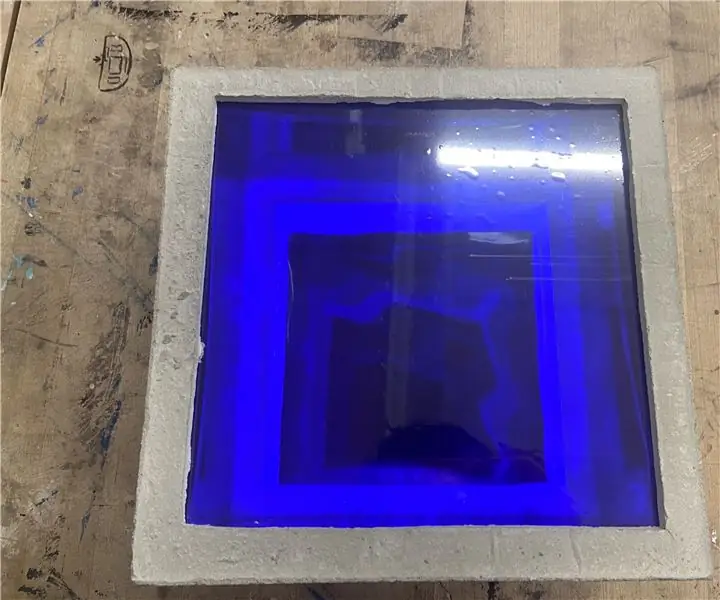
Spisu treści:
- Autor John Day [email protected].
- Public 2024-01-30 11:29.
- Ostatnio zmodyfikowany 2025-01-23 15:02.

Jest to dzieło sztuki z oświetleniem LED dla mojego projektu rzeźby o nazwie Sacred Object. Używam tego urządzenia do zaprezentowania wpisu do nowego świata. Kiedy włączam światło LED, widzimy nieskończony tunel wewnątrz betonowego pudełka. Taśmą LED steruję przez bluetooth w moim telefonie. Kupiłem wszystkie materiały na Amazon.
Materiały:
- Arduino Uno
-Pasek ledowy
-9V bateria
-DSD Tech SH-HC-08 moduł podrzędny Bluetooth 4.0 BLE;
-Rezystor -330 Ohm
- iPhone
-Beton
-Akryl
-folia okienna (lusterko w jedną stronę)
-Podwójna folia lusterka bocznego
Krok 1: Projekt obwodu
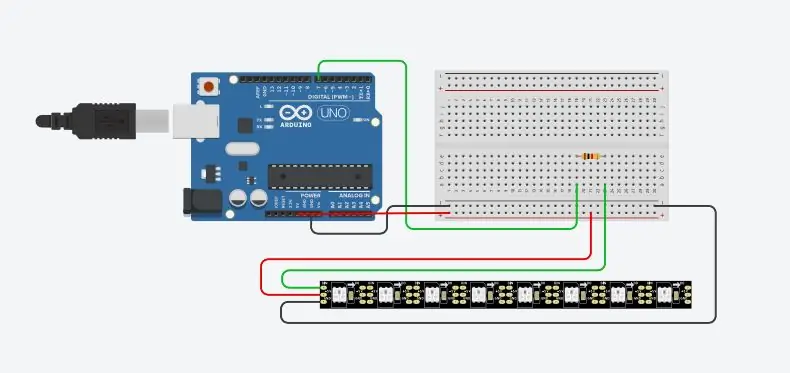

W ten sposób sprawiam, że obwód działa. Stworzyłem też sekwencję symulującą ruch fal mózgowych.
Pierwszy obraz to obwód taśmy LED.
Drugi obraz to obwód Bluetooth. Aplikacja na iPhone'a to BluetoothLED.
Krok 2: Kod Arduino
#włączać
#define LED_PIN 7 #define NUM_LEDS 60 diod CRGB[NUM_LEDS];
void setup() { pinMode(LED_PIN, OUTPUT); Serial.początek(9600); FastLED.addLeds(diody, NUM_LEDS); }
void setBlue(int val){ for (int i = 0; i< NUM_LEDS; i++) { leds = CRGB(0, 0, val); } FastLED.show(); } pusta pętla() {
if(Serial.available()) { val = Serial.read(); } if(val == 'H'){ leds[0] = CRGB(0, 0, 0); FastLED.show(); diody [1] = CRGB (0, 0, 0); FastLED.show(); diody [2] = CRGB (0, 0, 0); FastLED.show(); diody [3] = CRGB (0, 0, 0); FastLED.show(); diody [4] = CRGB (0, 0, 0); FastLED.show();
diody [5] = CRGB (0, 0, 0); FastLED.show();
diody [6] = CRGB (0, 0, 0); FastLED.show();
diody[7] = CRGB(0, 0, 0); FastLED.show();
diody[8] = CRGB(0, 0, 0); FastLED.show();
diody[9] = CRGB (0, 0, 0); FastLED.show();
diody[10] = CRGB(0, 0, 0); FastLED.show();
diody [11] = CRGB (0, 0, 0); FastLED.show();
diody [12] = CRGB (0, 0, 0); FastLED.show();
diody [13] = CRGB (0, 0, 0); FastLED.show();
diody[14] = CRGB (0, 0, 0); FastLED.show();
diody [15] = CRGB (0, 0, 0); FastLED.show();
diody led[16] = CRGB (0, 0, 0); FastLED.show();
diody [17] = CRGB (0, 0, 0); FastLED.show();
diody led[18] = CRGB (0, 0, 0); FastLED.show();
diody led[19] = CRGB (0, 0, 0); FastLED.show();
diody [20] = CRGB (0, 0, 0); FastLED.show();
diody [21] = CRGB (0, 0, 0); FastLED.show();
diody [22] = CRGB (0, 0, 0); FastLED.show();
diody [23] = CRGB (0, 0, 0); FastLED.show(); diody [24] = CRGB (0, 0, 0); FastLED.show();
diody [25] = CRGB (0, 0, 0); FastLED.show();
diody [26] = CRGB (0, 0, 0); FastLED.show();
diody [27] = CRGB (0, 0, 0); FastLED.show();
diody [28] = CRGB (0, 0, 0); FastLED.show();
diody [29] = CRGB (0, 0, 0); FastLED.show();
diody [30] = CRGB (0, 0, 0); FastLED.show(); diody [31] = CRGB (0, 0, 0); FastLED.show();
diody [32] = CRGB (0, 0, 0); FastLED.show();
diody [33] = CRGB (0, 0, 0); FastLED.show(); diody [34] = CRGB (0, 0, 0); FastLED.show();
diody [35] = CRGB (0, 0, 0); FastLED.show();
diody [36] = CRGB (0, 0, 0); FastLED.show();
diody [37] = CRGB (0, 0, 0); FastLED.show();
diody [38] = CRGB (0, 0, 0); FastLED.show();
diody [39] = CRGB (0, 0, 0); FastLED.show();
diody [40] = CRGB (0, 0, 0); FastLED.show();
diody led[41] = CRGB (0, 0, 0); FastLED.show();
diody led[42] = CRGB (0, 0, 0); FastLED.show();
diody [43] = CRGB (0, 0, 0); FastLED.show(); diody [44] = CRGB (0, 0, 0); FastLED.show();
diody [45] = CRGB (0, 0, 0); FastLED.show();
diody [46] = CRGB (0, 0, 0); FastLED.show();
diody [47] = CRGB (0, 0, 0); FastLED.show();
diody [48] = CRGB (0, 0, 0); FastLED.show();
diody [49] = CRGB (0, 0, 0); FastLED.show();
diody [50] = CRGB (0, 0, 0); FastLED.show();
diody [51] = CRGB (0, 0, 0); FastLED.show();
diody [52] = CRGB (0, 0, 0); FastLED.show();
diody [53] = CRGB (0, 0, 0); FastLED.show(); diody [54] = CRGB (0, 0, 0); FastLED.show();
diody [55] = CRGB (0, 0, 0); FastLED.show();
diody [56] = CRGB (0, 0, 0); FastLED.show();
diody [57] = CRGB (0, 0, 0); FastLED.show();
diody [58] = CRGB (0, 0, 0); FastLED.show();
diody [59] = CRGB (0, 0, 0); FastLED.show();
opóźnienie (100); } else { for (int i = 255; i > 0; i--) { setBlue(i); opóźnienie(10); } for (int i = 0; i < 255; i++) { setBlue(i); opóźnienie(10); } } }
Krok 3: Tworzenie pojemnika
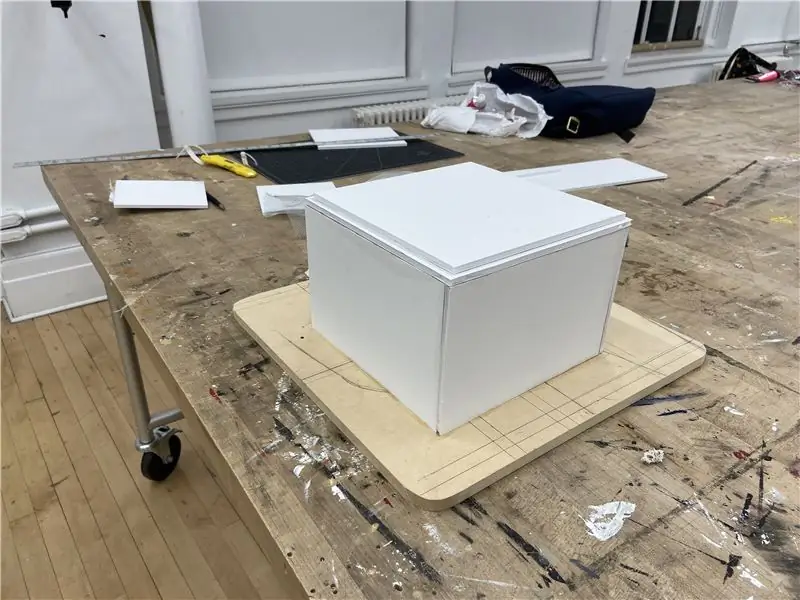
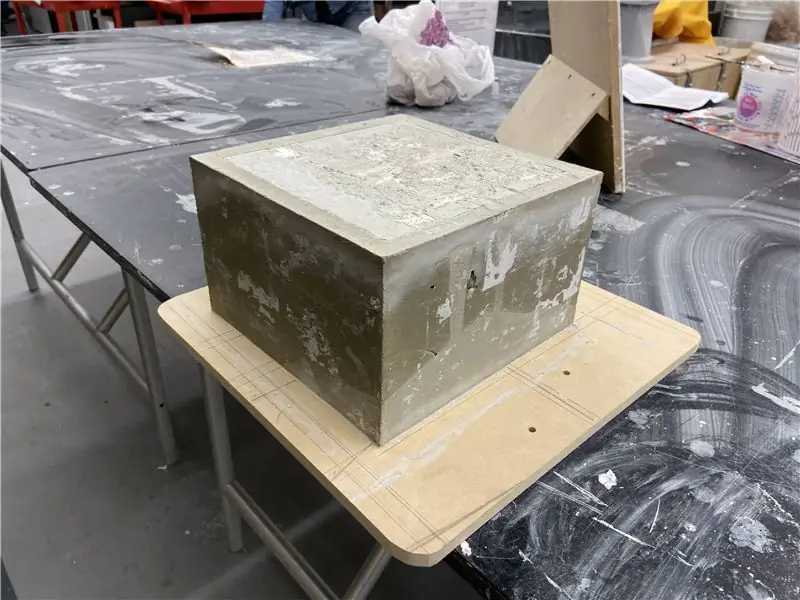
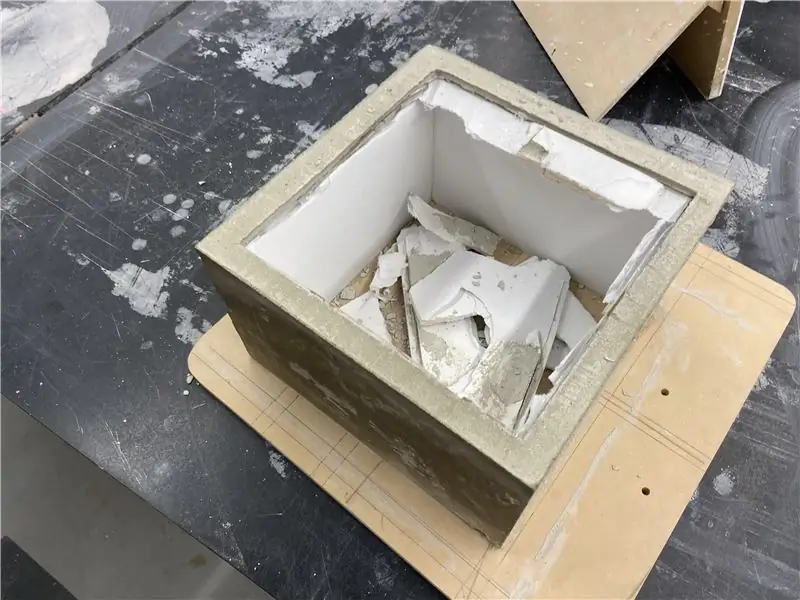
Pudełko wykonane jest z betonu. Używam płyt piankowych do wykonania pustej skrzyni do zabetonowania. Pozostaw do wyschnięcia na co najmniej 24 godziny.
Krok 4: Cięcie laserowe
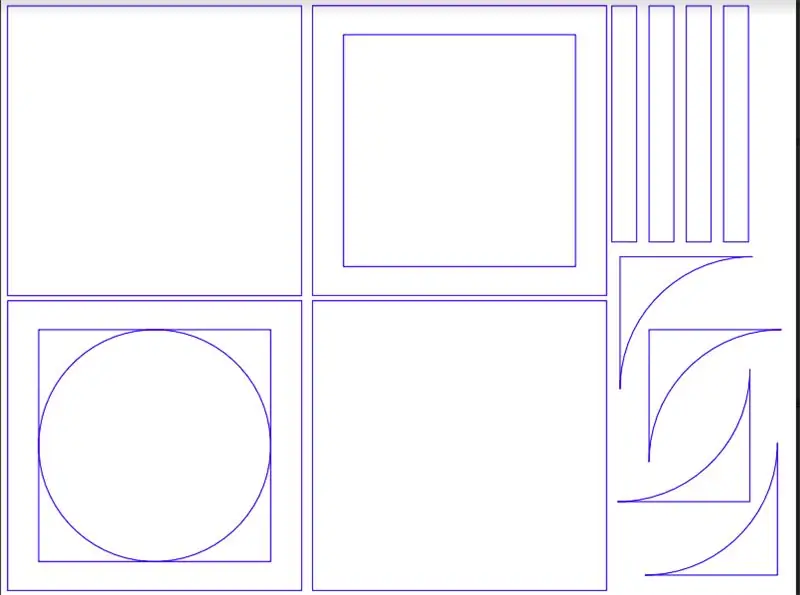
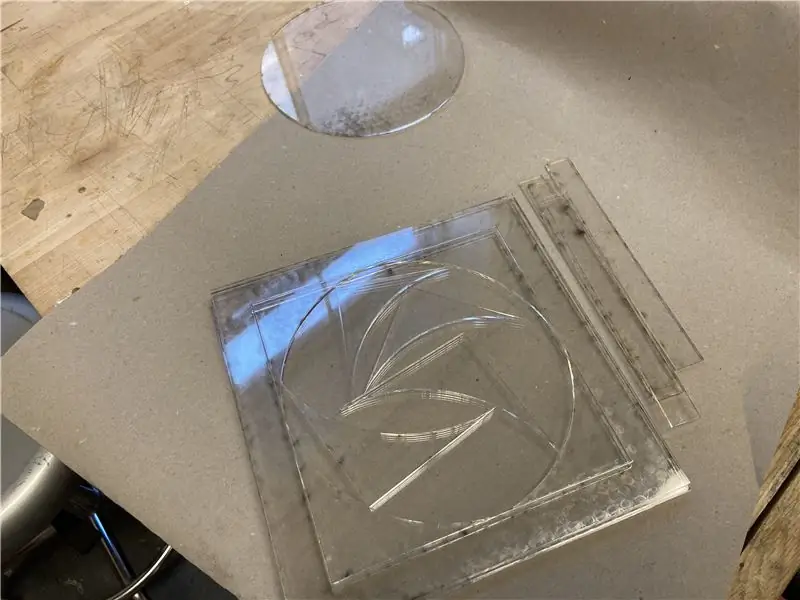
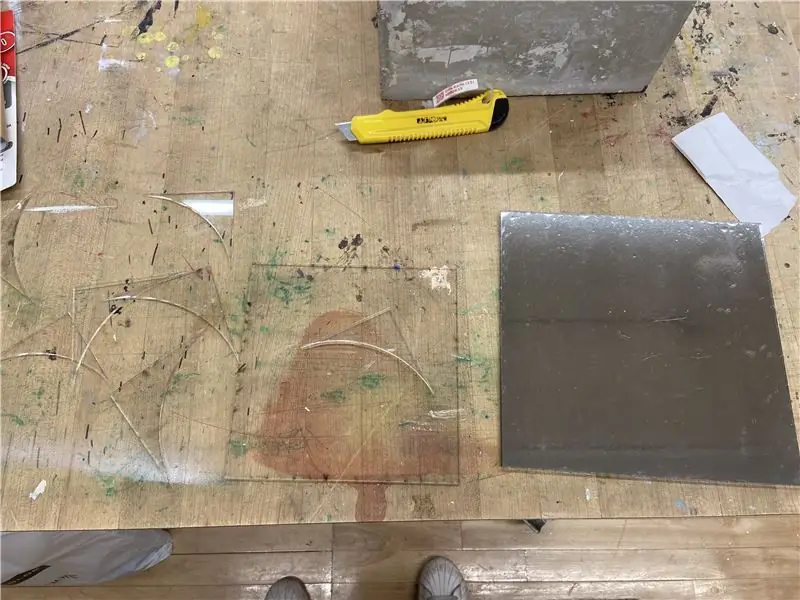
Narysuj kształt zmieści się w betonowym pudełku i wytnij go za pomocą cięcia laserowego.
Używam tego do warstwowania różnych przestrzeni wewnątrz pudełka: przestrzeni odbicia i przestrzeni obwodu. Na akrylowe kwadraty nakładam jednokierunkową lustrzaną folię okienną i dwustronną folię lustrzaną.
Krok 5: Pasek LED
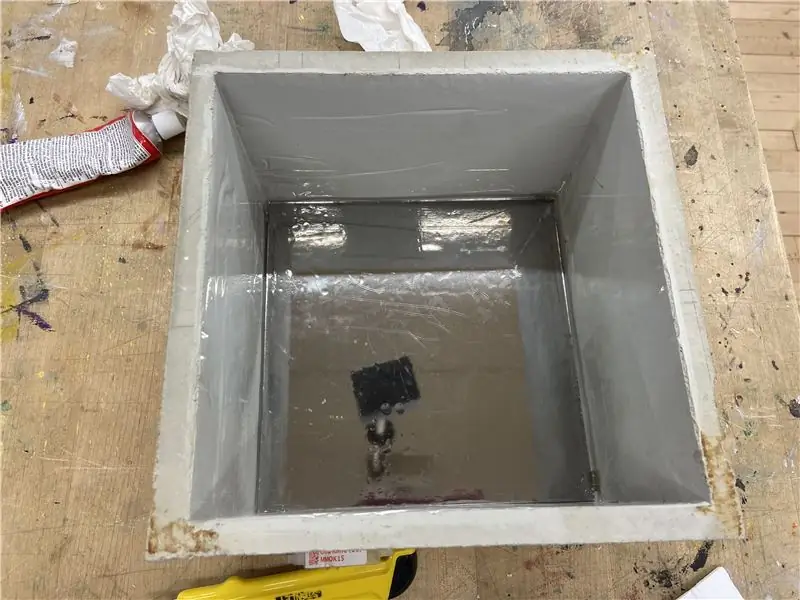
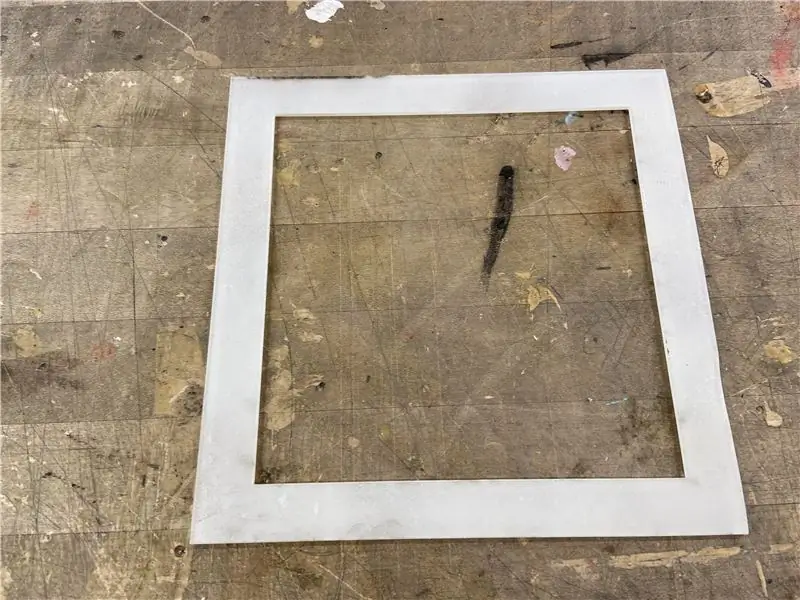
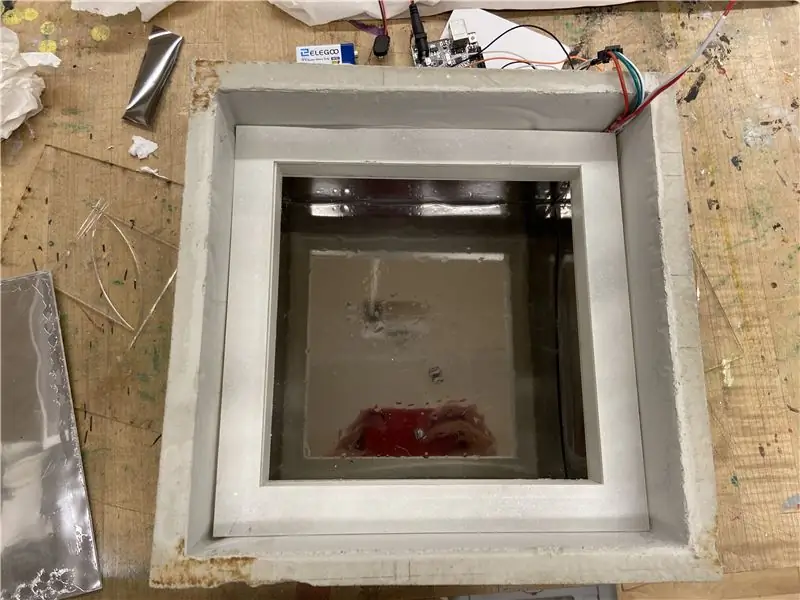
(Widok od dołu pudełka)
Najpierw położyłem folię lustrzaną w jedną stronę, strona lustra skierowana jest do wnętrza pudełka. I spryskaj ramkę białym kolorem, aby utworzyć półprzezroczystą rurkę na pasek LED i umieść ją na środku pudełka.
Krok 6: Obwód
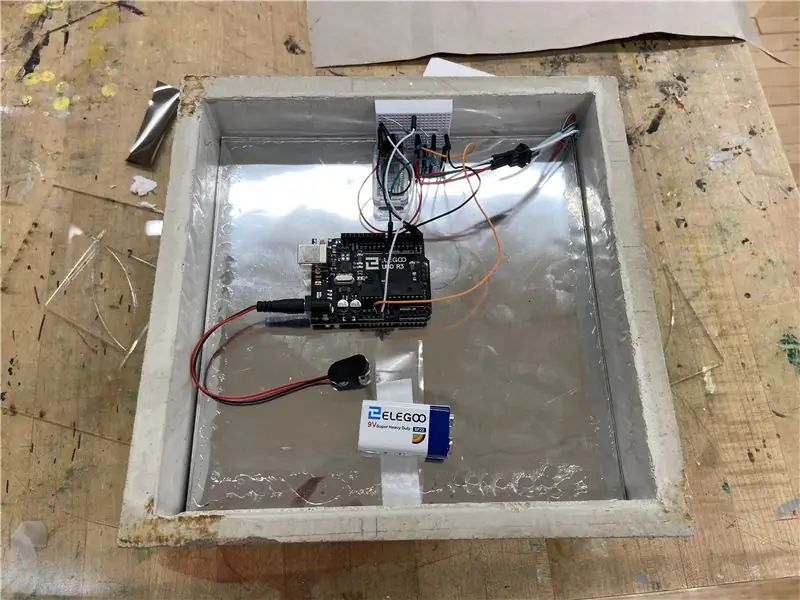
Umieść akrylowe lustro dwustronne na górze diody LED i przymocuj obwód.
Zalecana:
Urządzenie ASS (antyspołeczne urządzenie społecznościowe): 7 kroków
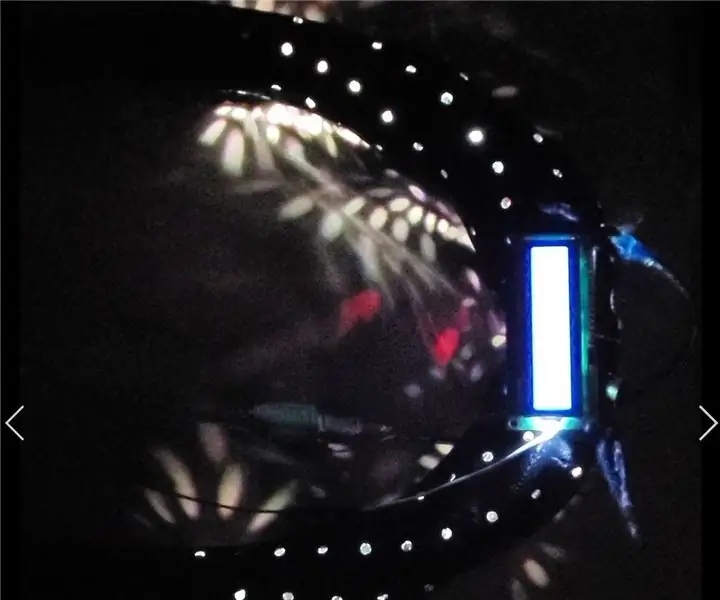
Urządzenie ASS (Anti-Social Social Device): Załóżmy, że jesteś osobą, która lubi przebywać z ludźmi, ale nie lubi, gdy są zbyt blisko. Ty też podobasz się ludziom i trudno ci odmawiać ludziom. Więc nie wiesz, jak powiedzieć im, żeby się wycofali. No cóż, wejdź – Urządzenie ASS! T
Uprawa większej ilości sałaty na mniejszej przestrzeni lub Uprawa sałaty w kosmosie (mniej więcej): 10 kroków

Uprawa większej ilości sałaty w mniejszej przestrzeni lub… Uprawa sałaty w kosmosie (mniej więcej): To profesjonalne zgłoszenie do konkursu Growing Beyond Earth, Maker Contest, przesłane za pośrednictwem Instructables. Nie mogłem być bardziej podekscytowany projektowaniem pod kątem produkcji roślin kosmicznych i publikowaniem mojego pierwszego Instructable. Aby rozpocząć, konkurs poprosił nas o
4-bitowe wejście szeregowe i urządzenie pamięci masowej: 4 kroki

4-bitowe urządzenie wejścia szeregowego i pamięci masowej: kiedykolwiek wyobrażałeś sobie, jak twoja klawiatura przyjmuje dane wejściowe i jak te dane są przechowywane! Ten projekt to mniejsza wersja wprowadzania i przechowywania danych. Dopracowane wyjaśnienie, w jaki sposób sygnał z klawiszy, zegar wpływa na elementy pamięci (klapki)
Odkrywanie przestrzeni kolorów: 6 kroków
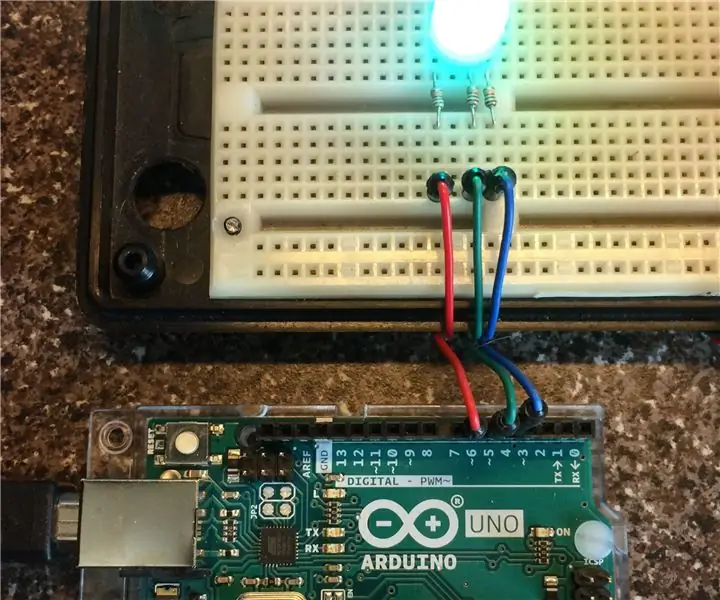
Odkrywanie przestrzeni kolorów: nasze oczy postrzegają światło przez receptory wrażliwe na kolory czerwony, zielony i niebieski w spektrum widzenia. Przez ostatnie sto lat ludzie wykorzystywali ten fakt do dostarczania kolorowych obrazów za pośrednictwem filmu, telewizji, komputerów i innych urządzeń
Kontroler oświetlenia taśmy LED 5V MIDI dla Spielatrona lub innego syntezatora MIDI: 7 kroków (ze zdjęciami)
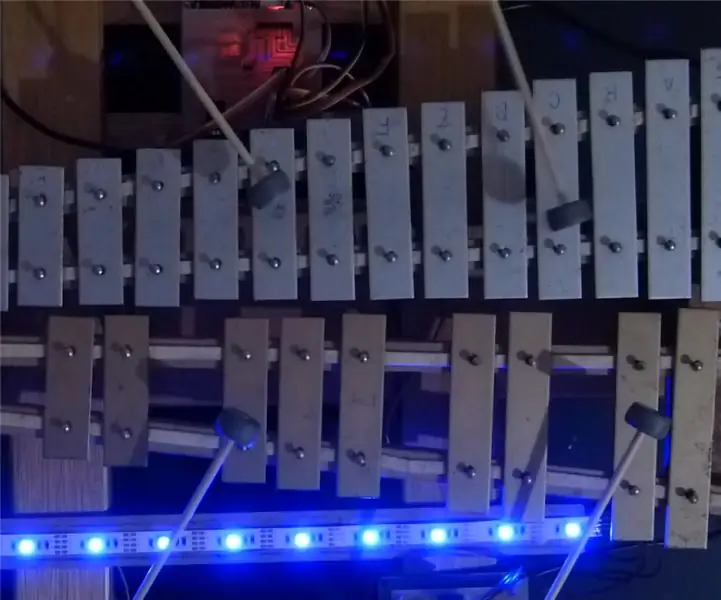
Kontroler oświetlenia taśmy LED 5V MIDI dla Spielatronu lub innego syntezatora MIDI: Ten kontroler miga trójkolorowymi paskami LED dla 50mS na nutę.Niebieski dla G5 do D#6, czerwony dla E6 do B6 i zielony dla C7 do G7. Kontroler jest urządzeniem ALSA MIDI, więc oprogramowanie MIDI może wysyłać sygnały do diod LED w tym samym czasie, co syntezator MIDI
